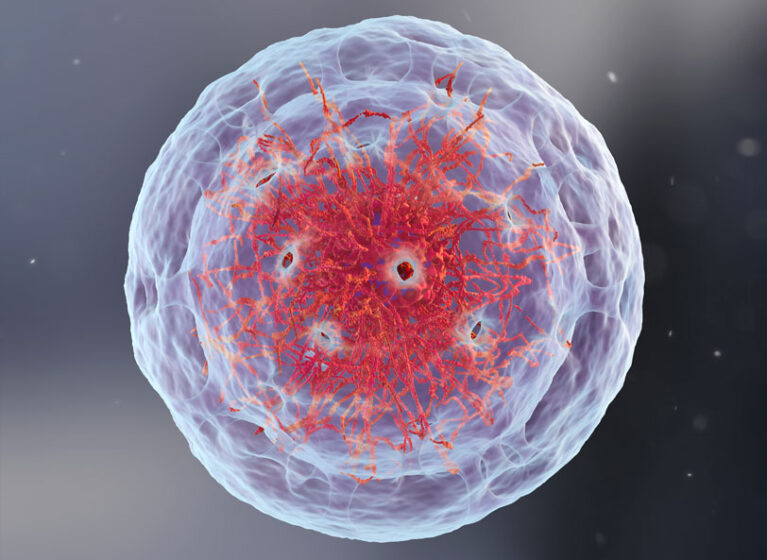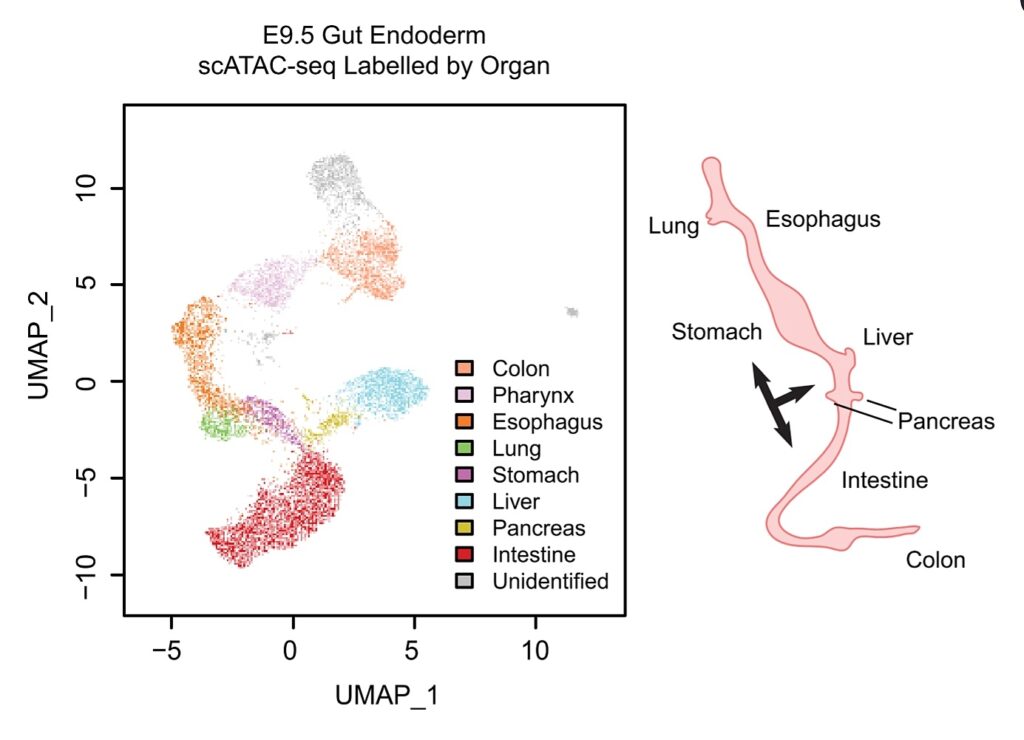
UVA Cancer Center researchers employed cutting-edge genomics technology to shed light on how the digestive tract, lungs, and liver form. By filling in important gaps in our understanding of chromatin’s role in the organ-development process, this research takes us closer to new cancer treatment targets.
“A better understanding of how genes work during organ development can give us insights into the mechanisms underlying initiation of many types of cancer,” says Chongzhi Zang, PhD, of UVA Cancer Center and UVA School of Medicine’s Center for Public Health Genomics.
He adds, “We found that one transcription factor, Sox2, is among the factors that play a role in mouse organ development in the very early embryo state. Interestingly, the abnormal activation of this transcription factor is also reflected in human cancer development.”
Revealing the Forces Behind Gut Development
Zang’s lab focuses on developing computational methods to analyze and integrate vast amounts of genomics data and convert this data into fundamental biology and biomedical knowledge. Innovative research like this is part of the reason why UVA Health is one of 53 Comprehensive Cancer Centers designated by the National Cancer Institute.
The UVA Cancer Center scientists and collaborators used the fascinating and dynamic process of gut development to learn how the same genome can create many different types of cells in different organs.
Zang says, “We knew the genes being used in different organs would start to show some differences in the early stages of development. But this was the first time that we found how such differences were controlled by chromatin during the organ-formation process.”
Single-cell chromatin profiling of the primitive gut tube reveals regulatory dynamics underlying lineage fate decisions. Image from UVA graduate student essay published in Nature blog.

Moving Beyond Gene Expression
Zang and his collaborators created a detailed map of the chromatin pattern changes that take place inside individual cells in the primitive gut tube during organ formation.
They used advances in a technology known as scATAC-seq or single-cell assay for transposase accessible chromatin with sequencing. Emerging single-cell genomic technologies are being widely applied to profile tumor tissues. But most of these profiles simply measure gene expression.
“We’ve added a brand-new layer of information on top of the gene expression,” Zang says. “When applied to cancer research, from a chromatin perspective, this technology can give us information about why a cancer cell is different from a normal cell.”
Important Insights on Tumor Formation
Chromatin interacts with transcription factors in an elegant arrangement that trains cells to turn on specific genes for the important jobs each cell is fated to hold. It’s important that this complex process play out precisely. The researchers found that errors can have dire consequences, disrupting, for example, the healthy development of the pancreas and intestines in lab mice.
The researchers note that cell fate errors occur in the early stages of pancreatic cancer. Understanding the organ-development process, and what can go wrong, offers important insights into the formation of pancreatic and other gut-related cancerous tumors.
He adds, “We use state-of-the-art technologies to tackle these complex problems and believe that these fundamental discoveries, one step at a time, will eventually inspire new therapeutic development and benefit cancer patients in the future.”
Findings Published in Nature Communications
UVA Cancer Center partnered with colleagues at the University of Toronto on this research. They published their findings in the scientific journal Nature Communications.